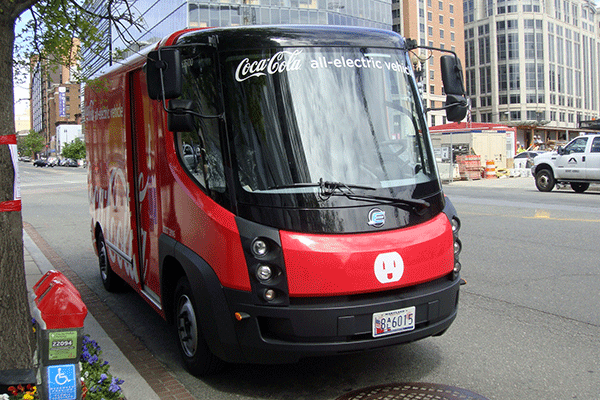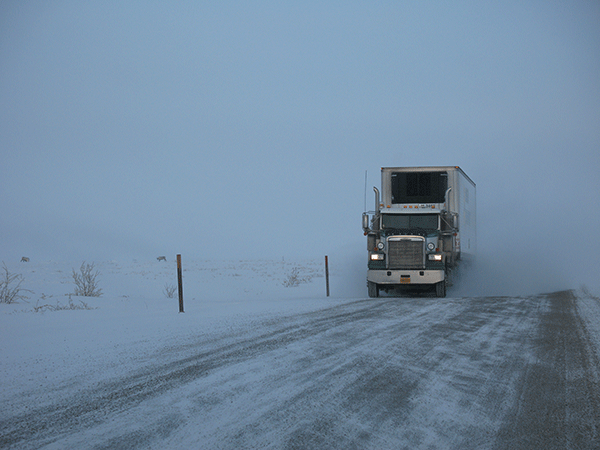
2019: The Year in Trucking – IoT Takes Over
Looking back at trucking in 2019, it’s clear that this was a breakout year for IoT. More devices are talking to each other, which is transforming logistics. Through the IoT, it’s possible to know where trucks are, what’s loaded on them, and how much stress the vehicle is under. This provides even more data to fleet managers, especially when you add smart dash cameras, autonomous vehicles, electric vehicles, business analytics, and Electronic Logging Devices (ELDs) to the mix.
Through these devices, fleets can access unprecedented amounts of insightful information to address accountability, compliance, efficiency, and safety. Here’s a look back at how the IoT made news in the trucking industry in 2019, along with a few highlights from GPS Insight.
Top Fleet Industry News
Growth in Visual Telematics Solutions
Want to start a heated debate? Mention dashcams around anyone in the trucking industry. Many drivers still see the inward-facing view as Big Brother trying to find fault, though some organizations are restricted from recording in-cab activity.
Today’s dashcams are far more than a GoPro suction-cupped onto a dashboard to see when the driver does something wrong. Some advanced smart cameras are available with 360-degree views and AI software that automatically creates coaching opportunities for drivers. They can tell when drivers are distracted – or give them credit for slowing down to let another vehicle merge. This technology gives fleet managers more tools to protect their organization and their drivers from false claims and unnecessary litigation.
Industry insiders expect to see 20% growth in dashcams – or Driver Behavior Management Systems – through 2022. As of late 2018, about 800,000 cameras were operating in fleet vehicles. That’s up from 380,000 in 2015.
Self-Driving Shows Promise
Autonomous vehicles of all sizes and shapes racked up test miles this year. Excitement peaked in December when a semi hauled butter 2,800 miles across the country. Even with a human backup driver, that’s quite an accomplishment.
Other companies, such as TuSimple, are hauling cargo for paying customers. TuSimple is even working with UPS to work toward vehicles that will drive themselves without human intervention in certain conditions (known as Level 4 autonomy in the industry). These are huge first steps, and they hint at where the 10.5-billion-ton trucking industry is heading. That future is certain to include more IoT-related functions, especially as fleets begin navigating in “smart city” environments.
Right now, TuSimple and its top competitors have raised $1.2 billion and employ nearly 2,000 people. The top 10 competitors in the space – TuSimple, along with Starsky, Waymo, Embark, inthinc, Torc, Caruma Technologies, Scottylabs, Bestmile, Aurora, and Pony.ai – average $5.1 million in revenue. These numbers are a sign that self-driving has a big future.

Business Analytics Boom through IoT
Count to 10. We’ll wait … in that time, 1,270 new IoT devices were connected to the Internet. While many of them are AirPods, some are hard at work transforming the way businesses operate.
One of the most-significant applications is in inventory tracking. IoT is swiftly bringing the days of hunting through a warehouse to an end. Getting low on an item? Your system might order it before you ever realized the drop in inventory.
IoT analytics is helping organizations understand and optimize energy use. Lighting, security, equipment monitoring, and asset tracking are just a few segments where the IoT is helping save and make money.
ELD Deadline
The final (and it’s for real, this time) deadline to phase out paper logs and older Automatic Onboard Recording Devices passed in December. As of now, surveys indicate that up to 62,000 vehicles might be operating out of compliance. The penalties are stiff, including fines discontinuing shipments and placing drivers out of service.
Top Blog Posts
We’ve had quite a bit to say in our blog posts this year. Most posts focus on answering questions – not just from GPS Insight customers, but from anyone interested in learning about telematics and fleet management. Here are the most-read posts published this year.

Winter is Coming
Back in January 2019, we published some advice for keeping drivers safe during harsh winter conditions. Find out what we said, from better driving habits to custom solutions.
Dialing into Dashcam laws
Getting back to our IoT theme, driver-facing dashcams were a popular topic on the blog. We had numerous visitors interested in learning about dashcam laws. Interested? Have a look to see the info we compiled!
Asking the Right Questions
Sometimes, a purchase just doesn’t work out. It even happens with telematics decisions. So how do you avoid buyer’s remorse with your fleet management solution? We offered telematics procurement tips to make sure your organization gets the results it needs.
Taking the Distraction Out of Driving
Distracted driving is a killer, and this post contains stats that illustrate the dangers. Here’s one of the most shocking: 71% of drivers admitted not only to rubbernecking at emergency scenes, but taking photos of them while driving. We offered some tips to prevent your fleet from adding to the statistics.
Your Resource for In-Cab Cameras
Dashcams, smart cameras, fleet cameras – call them what you will, but they made two appearances in our Top 5. This post is our central hub for the camera issue. We’ll add more to it as we publish more camera content. We recommend you make it your first stop for camera-related questions. You’ll also get an overview of the advantages cameras offer versus just relying on conventional telematics data.
Changes at GPS Insight
The team at GPS Insight wrapped up 2019 with a long list of changes. Here are the highlights.
More Products, More Often
We listened to your calls for more products. We invested in our product team and modernizing our codebase and servers. These structural changes pave the way for better meeting the needs of organizations that want to improve their accountability, compliance, efficiency, and safety. We’re upgrading our products more often, with double the service updates compared to previous years.
Our new products are also a result of responding to the market:
- The Driveri 360-degree AI smart camera now protects drivers and organizations through real-time coaching and providing indisputable evidence for accidents.
- ELD Mobile and DVIR Mobile provide smartphone simplicity for drivers and an intuitive web portal for fleet managers.
Stepping up our commitment to innovate also impacted our brand identity: In recent years, we’ve come to recognize ourselves as a fleet management solution, which goes beyond dots on a map. This led us to transition from our old satellite logo to one that embraces the possibilities of changing technology that are reflected in our new products.
Turning to the Right Channel
We expanded our reach and added new routes to market by utilizing resellers. To deliver the best experience for customers, we invested in growing our partner network and developing the tools to make buying easier. This transformation makes it simple for partners to bundle fleet management solutions with their device sales.
Our new ECOcenter site also made it more efficient to enable customers with the right solution. ECOcenter allows partners to determine the products needed. It’s as simple as entering VINs and getting an automatic hardware recommendation for the customer’s vehicles. Our self-service features allow partners to track the order and set up new customers independently.





